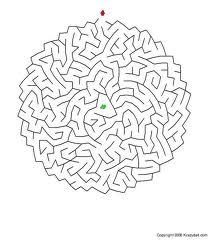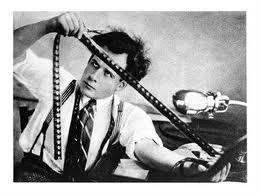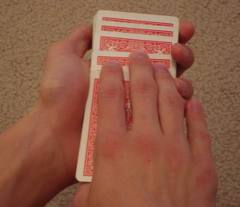
Intuitive Indulgences
The other day, as I considered the present, my thoughts turned to how I got here. My mind drifted back over the years, though it was not a nostalgic trip, nor one with a particular purpose in mind, it was not from regret or longing, it was simply an aimless wander. While I had no conscious goals in mind, as I meandered I found myself thinking about my path, and the “gifts” that had placed me firmly on it and then about some of the skills I have learned along the way.
Rivers of thoughts related to my path, gifts and skills swirled around me. One stood out, for whatever reason, and when I touched it, I felt my purpose or at least one of them, and that one being to share what I have discovered and to teach others where I can. In doing so, I had grasped one of those many rivers and so my attention followed it and along came a torrent of related thoughts.

This river has its sources, these being its own beginning as well as the streams that flow into and merge with it. I become attentive to one of those streams of thought, in particular, one about a particular gift. In doing so, I had thoughts about how my ability to sense and work with energy had affected my path and contributed to my learning enough to not only share with others but to also teach others what I had learned.
When I grasped that thought, another stream of thought surfaced and that had me thinking about the skills I have and how they relate back to my gifts and then full circle to the purpose of sharing and teaching. I let go of other thoughts and allowed these three groups of thoughts to come to the fore.
It occurred to me, as I rode the waves of vibration, that the firmly held thought that energy follows attention, and the “skill” of learning to sense when my Rational Mind (RM) is interfering in the free flow of intuition, had made the most significant difference for me. Yes, over the years, lots of ideas and thoughts helped me along, but these two stand out.
My strongly held belief about how energy acts means that it is a factor in all that I do. I no longer see the world as being comprised of “physical things” which helps enable my perceptions beyond that which is physical, though I am not certain I ever really did. Our beliefs can literally turn our mind into a maze of options and possibilities most of which leave us spinning our wheels. I have spoken of this before, when talking about root mental constructs and how our belief about the nature of our existence, affect our ability to work with energy and be aware of intuitive impressions. It also gives us the potential to see the consequences of thoughts and use energy more actively.

Working with energy is a skill as well, one we can all learn to do consciously, for we already do so without knowing it. Earlier, I referred to it as a gift; I did so because for me it was not something I had to learn how to do consciously, my task has been to understand and develop the skill.
When we can sense and work with energy we can manage our own better, become aware of energy influences on us and can deal with them as they arise. The next step is to start to “read” what we sense, though this does take time. Those not naturally aware of the other aspects of their awareness can learn to do this through meditation and by active mental practices that help us to recognize when our RM is getting in the way.
Those who seek to develop their skills have two challenges: developing sensitivity to energy and then reducing and eliminating the blocks within our RM. We can develop our sensitivity through meditation; dealing with the blocks takes more time; however, there are ways to speed up the process.
One of the ways to work on our blocks is to examine our thoughts, especially our beliefs about what we are, the nature of our existence and our reality (1). As we work on understanding what we actually believe, as opposed to what we think we believe, we can work on what I have mentioned, getting to know when our RM filters and blocks out information. I have discussed how to work on blocks, what helps is if one can actually notice when our mind does this. I covered this, in part, in the piece “Paying Attention to Our Attention” (2) when I went through the Experience-Reaction Sequence.
What we looked at was the sequence or process the mind goes through when it examines our experiences and our reaction to them to determine what we will be consciously aware of. To add to what I wrote there, which focused on the process itself, I am including a section from the exercise on Improving Our Honesty (3) covering the Rational Mind Editor (RME). A friend exposed me to the idea of our minds editing our thoughts and while this exercise is only available to site members, I am including this piece of it here because I believe it will help further your understanding.
Being able to detect when our RM is getting in the way helps us to get at our blocks and filters as this is how we recognize when it is active. This gives us the opportunity to bypass its interference so we can become conscious of natural intuitions and impressions from without. While developing our sensitivity to energy and learning to notice what our RM is blocking are helpful, they are not necessarily magic bullets. Nonetheless, without them it is likely we will continue to struggle with trying to develop our intuitive or “psychic” awareness and skills.

Our intuition is one of our greatest gifts, yet we struggle to recognize when we are receiving an intuitive thought. Armed with an awareness of what our mind does on our behalf (whether we like it or not) is a great tool in our arsenal. Let us then take another look at the process our minds go through when it is determining what we are conscious of. After you have read it we will have a little fun.
Detecting our Rational Mind Editor (RME)
Our rational mind controls what we are conscious of and this has a direct bearing on our honesty. We looked at our how our own minds create the blocks and filters that affect what we are conscious of in the essay “The Limiting Aspects of the RM” (4). Blocks and filters are part of what one could figuratively refer to as the Rational Mind Editor. Our RM editor decides what we notice, what is too sensitive to consider and even what thoughts we think. It did not take over this function on its own; we have allowed it to do so. By improving our honesty, we begin to take a more conscious role in our minds editing process.
In the essay on Honesty we looked at the honesty involved when one is answering the question of "how are you feeling/doing" and how we generally do not answer this question honestly. To understand why this is so we will step through the process our mind goes through to answer the question.
Initially our rational mind hears the question and, as it does with any input such as a thought, an emotion or an experience, it begins to process what it hears, even before we are conscious of it. In the time between when we hear it and we think about what we heard our rational mind has already processed the information and if it is a question, it has the answer. It then compares the answer with its programmed responses. If it is something we are unwilling to look at it goes to the second most honest answer and so on until it comes to one that passes all the filters and blocks. Only then are we consciously aware of it. We then consciously edit this response a few more times for any number of reasons.
It might surprise you to know that most of the time the answer people are conscious of is at least the tenth most honest on the list or lower. The most people might notice of the edit process being some form of hesitation. We would have hundreds of thoughts during even a brief hesitation. Most of these thoughts happen too quickly to be perceptible. What we notice are those deemed acceptable by the programming of our rational mind. The act of examining our honesty gives a clear signal to our rational mind that we are losing our fear of the truth. This is the first step in changing the programming established by how we have reacted to our experiences.
To start to get a better understanding of your editor, do the following:
- Find a nice spot to sit and relax, if you meditate now do that, if not a chair or cushion on the floor will suffice.
- When you are relaxed, get a feel for your overall state of mind, whatever perceptions you have of you and try to remember what you feel.
- Ask yourself "How do I feel?" and then answer it.
- As you answer try to be conscious of how you feel and what thoughts go through you mind as you answer it. Compare this to how you felt before you asked the question.
- If you are sensitive enough, you should notice a shift, hesitation or perhaps a slight flush in the chest or a tightening in the lower stomach area. There is always a shift, unless you are completely centered. Do not be concerned if you did not notice one, in this case try to note what you thought. Try to articulate the potential answers of which you were aware. Consider the different answers for a few moments. Do they share any commonalities?
- After a short period, ask yourself if the answers from the previous step are the most honest answer and notice how you feel as you answer as you did for the previous question. Go through the same deliberation as the previous step for another short period.
- Go back to step 2 and repeat the process with this new awareness.
How you approach and go through this process is most revealing. Hesitation to do so is an obvious sign of some concerns about ones degree of honesty; though do not be too hard on yourself. There are times when we all would prefer to lie to ourselves; however, it is important to know that we are. Developing our sensitivity to our editor is a big step in the process of attaining a high level of honesty. By improving our honesty, we begin to remove the illusion our minds have created for us. You should notice you intuition improves as the less encumbered our mind is the less it filters and edits what we are conscious of.
The rational mind does the same for all input, which is why we are not consciously aware of very much of the totality of what we experience. What we experience includes all sensory input regardless of the level; hence, it includes our emotions, our thoughts and those manifested as we integrate what we experience. Even what comes from within be it an intuitive thought or awareness, or external such as the thoughts of others that we receive when we encounter the energy of those thoughts.
Learning to understand how our rational mind edits the "information" before we become aware of it is a key element of developing our awareness. Meditation is of great value here as in such a posture we have less thoughts hence we are more able to perceive this edit process. We start by grasping the concept, move from that to noticing it and then to working to lower how much the rational mind filters, blocks and edits what it perceives. It is a gradual process. To be successful at it, we must be committed in our intent to lower the number by becoming more honest and also put our desire behind this intent.
The quieter our mind is the better chance we have of noticing our hesitation, which is a powerful tool to noticing when the engaging of our rational mind editor. It tends to do so in areas that are “sensitive” about, have deemed less relevant, or have chosen to block. Once you have started to work with your editor you can, if your mind is quieter, notice when it kicks in even as you go about your daily activities.
End of section taken from "Improving Our Honesty"
Now that you have an idea about the RME, it is time to try to put this understanding into practice with The Guessing Game (5). When you read this exercise, you may be inclined to think that it is of little practical value, this is not the case at all. We need to take a more active role in examining our thoughts and our reactions to them; this is how we perceive our conditionality, the “I” or ego aspect. We are not going to change a lifetime of mental habits unless we change how we think and what we think. By doing this “game”, along with understanding the minds editing process, you will become being more aware of the processes our minds go through by trying to perceive them.

Ex 8.1: The Guessing Game
You can do this little exercise anytime and without any preparation, though you may also do this in a semi-meditative state to see if you can be more accurate. All you need is a deck of cards and a few minutes. When you do this exercise, be aware of your Rational Mind Editor (covered in Ex 2 Improving Our Honesty).
Step 1:
While sitting down at a table or on the floor, relax your body and mind as best you can. Take your deck of cards and hold it in one hand face down.
Step 2:
You can do this exercise any number of ways as listed below. Choose the one that is most comfortable to you, though I suggest trying all the ways to notice how the odds of correctly “guessing” affect your choice.
- Use the colours of the cards only (red/black) – 1 of 2
- Use the suite of the cards – 1 of 4
- Use the number of the card regardless of the suit – 1 of 13
- Use the actual card – 1 of 52
Step 3:
Once you determine the way you are going to do this, take the first card on the deck and without thinking about it state what you believe that card is (ex. It is a red card, it is a Club, it is a seven or a Jack, or it is the four of Hearts). Once you have stated what you think or feel it is, look at the card and place it in one of two piles. Put the cards you were right about in one pile and the ones you were wrong on in another. For all but the last example, you may also want to pass on looking at the card at all and simply place it in a pile corresponding to the choices you have. I suggest this because if we check every time we guess on a card and are getting many either right or wrong it can affect our thinking and take us out of the moment.
Try to go with the first thought that comes to mind and not second-guess yourself. When you are stating what the card is notice if you are thinking about your choice because once you start to think about it you may find that you get more wrong than when you go with the first choice.
Step 4:
Go through the deck one card at a time. Continue to monitor your thoughts and feelings as you do so, though try not to focus on them. The pace you choose to do this at can affect the outcome. The more time you take to consider each card, the more likely you are to be second-guessing. This means you are going with your impulse rather than your intuition.
Step 5:
Count the cards in each pile and see how you did. The odds suggest the average outcome should be. If the number of times you are correct varies significantly from the odds then you are getting the answers. If you are more often wrong then you are editing your thoughts to go with your impulse rather than intuition. You were getting the answers; you just were not able to trust them. This happens when we resist the intuitive response and replace it with a thinking response.
Follow-up
Do not worry about the number of times you were right or wrong, they are just about irrelevant. The benefit of this exercise is not dependent on getting the right or wrong answers; it is on paying attention to your mind and trying to learn to be perceptive of and go with the first thought that surfaces, the intuitive one. Over time, you should start to notice your editor engaging and can begin to examine why you let it speak for you. A common reason is we like to be right!
Do try all the variations if you can because when we have more choices you may be able to feel your editor more easily. This is because the higher the risk of being wrong the more our editor is engaged in the process.
End of "The Guessing Game"
Our minds often refuse to believe that reality is more like a fluid medium or a dance of light and energy than fixed and rigid. Millennia of history and our own lifetime of experiences have painted reality this way. We build our minds out of thought constructs that reinforce this mistaken perspective, including the notion that we are separate and independent of the other “things” we perceive. Interestingly enough, if you examine the research on ESP and psychic phenomenon you will find that they are verifiable.
Dr. Dean Radin examined these in his book “The Conscious Universe” (5). In the introduction to the book, he states:
The idea is that those compelling, perplexing, and sometimes profound human experiences know as “psychic phenomenon” are real. This will come as no surprise to most of the worlds population, because the majority already believes in psychic phenomenon. But over the past few years, something new has propelled us beyond old debates over personal beliefs. The reality of psychic phenomenon is now no longer based solely upon faith, or wishful thinking, or absorbing anecdotes. It is not even based upon the results of a few scientific experiments. Instead, we know that these phenomenon exist, because of new ways of evaluating massive amounts of scientific evidence collected over the centuries by scores of researchers.”
We are at the cusp of a new awareness of self, and one of the remaining impediments is the thoughts we have. We can and will move past them; and fortunately, there are ways to accelerate this process by simply starting to think about what we think. When we start to question and examine what we believe we see how conflicting and contradictory thoughts can work against us. Further, when we start to turn our attention within, we begin to notice things we had missed, this is a key element to beginning this shift for ourselves.
When we recognize that our RM has edited what thoughts we can start to reduce its tendency to do so. This will allow us to be more perceptive of true intuitions because we will not question or distrust them so much, and we will act more and more in the moment. We do not have to have reasons for everything nor do we require explanations for everything, we have just come to do these things out of habit and to a certain extent neglect. The wonderful news is that these limitations can be changed if we have the desire to and put in the effort required.
The calls of silence
Pressing back through the wind
They call to all
Their only voice
Not still – defiant
The calls of silence
All too oft left unanswered
I want to be still
No mind voice
Stilled – compliant
The calls of silence
They echo in us forever
They defy never
And the only choice
Forever - reliant
Are the calls of silence
Our forever companion
When we hold nothing
We find everything
And that the answers
Were hidden in the call.
© 2011 Allan Beveridge
References (*- denotes essays only available to site members):
(1) Exercise 1: What Do I Believe
(2) Paying Attention to Our Attention
(3) *Exercise 2: Improving Our Honesty
(4) *The Limiting Aspects of the Rational Mind
(5) The Conscious Universe, by Dean Radin Ph.D.; published by HarperOne, 1997
